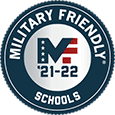For anyone looking to start their career in heavy equipment operation, being able to properly use and operate a forklift is a critical skill. Forklifts are versatile and can be used on construction sites, in warehouses, and beyond. Knowing the differences between the types of forklifts, as well as which to use on the job, will prove crucial to anyone starting their career in heavy equipment operation. Read on to learn more about the most common types of forklifts.
Table of Contents
Overview of Forklifts
Forklifts have been used for over a century to assist in lifting and moving heavy loads. The boom in forklift usage started during World War II, and they have since become an indispensable piece of heavy machinery in the manufacturing industry and beyond.
Usage
Forklifts are most commonly used in warehouses and factories, but you might see them in other settings like on docks or construction sites. Forklifts are designed to accomplish any lifting and moving job. However, the type of forklift used depends on the task at hand. The weight of the objects being moved and the space available determine which forklift can best do the job.
Types of Forklifts
Being able to identify which forklift is the right one for the task at hand is a crucial skill for heavy equipment operators.
A forklift can fall under one of seven classifications, which are distinguished by their features, the type of fuel, and the ways they are used. Electric motor forklifts makeup three of the classifications but vary based on whether they are narrow or hand riders. Internal combustion engines differ from electric ones because they use fuel. Forklifts with pneumatic tires contain air which gives them a stronger grip on uneven terrain as compared to ones with cushion tires.
Here are four of the most common forklifts:
Counterbalance
These forklifts get their name from the weight on the back of the lift which acts as a counterweight for the loads that are picked up. Counterbalance forklifts can either have three or four wheels. The three-wheel allows for more maneuverability throughout tight spaces.
Commonly operated in: loading docks, warehouses
Side Loader
On a typical forklift, the forks are located on the front of the lift. On a side loader, the forks are located on the side, allowing the forklift to maneuver tighter spaces with ease. They can also carry longer objects that might be too heavy or awkward for another kind to safely lift.
Commonly operated in: lumber yards, narrow spaces
Reach
The reach forklift stands apart due to its extension. This lift can reach over 32 feet to help get objects on and off tall shelves. These forklifts feature “legs” at the front of the machine to stabilize and add support.
Commonly operated in: warehouses with high storage
Rough Terrain
As the name might suggest, this forklift is used for jobs with uneven terrain. Their tires have thicker than usual treads which increase the stability of the forklift. Their engines have more power which allows the forklift to transport heavy loads over rough land. This heavy-duty machine is the largest and most durable forklift.
Commonly operated in: outdoor construction sites
How to Operate a Forklift Safely
The first step to safely operating a forklift is going through an inspection checklist. While the list itself will vary depending on the type of forklift being operated, the list below provides a general guide.
Be sure to check:
- Operator manual
Safety belt - Forks condition
- Oil and water level
- Hydraulic fluid and hoses
- Tires
- Mast chains
- Sirens function
- Backrest
- Finger guards
- Legible safety decals
- Operator compartment for debris
Another aspect of safety is knowing the potential hazards in order to avoid an accident.
- Always be mindful of speed —especially when turning.
- Be aware of surroundings – especially bystanders in the area. This also includes the conditions of the ground. Check for debris or any hazards like slick ground.
- Secure the loads properly before moving.
- Never overload the lift. This applies to both the weight of the objects and the clearance around the object.
- Keep the forklift properly maintained. Proper maintenance decreases the odds of an accident and keeps jobs running smoothly.
Only once the forklift has cleared the safety inspections can it be operated. Forklifts have operation rules to adhere to, and the specific operation guides can differ by type of lift. But generally, you can follow this guide to operating forklifts.
To turn the forklift on or off:
- Press the brake and turn the key.
- When it’s off ensure the directional lever is in neutral and the parking brake is secure.
To raise or lower the forks:
Pull the leftmost lever toward or away from you.
To adjust the forks:
- Pull either the right, left, or middle levers.
To drive the forklift:
- Move in various directions by releasing the brake and angling the directional lever the way you need to move.
How HEC Can Help You
Differentiating between the types of forklifts, as well as knowing how to operate them safely, are important skills. All forklifts require certification in order to operate. While HEC does NOT offer forklift training, we offer a variety of training on heavy equipment that can help you learn how to use heavy equipment in as little as three weeks. The expert instructors at HEC train you to operate heavy equipment found on construction sites, warehouses, and other industrial settings.
HEC program offerings vary by location. Check out our website to see if a location near you has the program you desire, and to start the enrollment process today.




